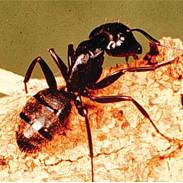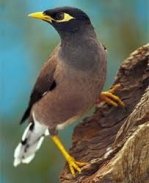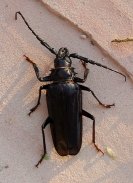



The Common Spiders In Northern Beaches To Be Aware Of

28 Jun2023
Spiders might have an environmental role still they are unwanted at home. Since over 2,400 spider species are widespread in Australia, so every home will come across a few in some time. About 50 or so of spider species have been found to be harmful. But their size does not determine them.
Huntsman might be of big size, but they are largely harmless on Northern Beaches. However, the dangerous ones are of smaller size, which are Red Back and Funnel-Web spiders.
You might not know whether handling the spiders is safe, the reason being you are not familiar with them – so better is to leave it to the spider control professionals providing the services on Northern Beaches.
Here we have talked about the dangerous spiders, so it is easier for you to identify them.
1. Black House Spider
The Black House Spider or the Widow Spiders are mostly dark brown or black, but their abdomen is likely to be grey with faint white markings. The male size range from 9 – 18mm and the females are twice the size. The crevices of the tree trunks and rocks are homes to these spiders. Still, you can see them moving into gutters, cracks in walls and window frames. Their funnel-like webs might cause you to mistake them for funnel spiders, but remember the black house spiders neither burrow in the ground nor disguise webs with debris.
Technically, these are poisonous, however not deadly or aggressive. If they bite, you shall have an uncomfortable feeling and end up with swelling, nausea and pain for around 24 hours. Persisting pain and blistering at the wound site means you need medical treatment.
2. Huntsman Spiders
The common huntsman spiders form a group of over 100 similar spiders in their Sparassidae family. They own an imposing figure with spanning 16cm hairy bodies and legs. Nevertheless, their appearance does not make them that dangerous.
These spiders can also be identified by their elongated front legs, flattened body shape, crab-like walk and markings of white, black and brown colours. Their hunting time is at night, but they prefer living in small cracks between rocks and underneath tree barks during the day. Be careful – these are notorious to remain hidden in dark, small places in homes or cars, you might get a shock after moving the object that they were behind.
Don't panic if they bite you, go to the doctor. Their bites cause pains, but are not toxic.
3. Garden Orb–Weaving Spiders
Garden orb-weaving spiders, similar to huntsman spiders are a genus containing around 100 different species, which hang out on leaves during daytime. Often they are seen with reddish-brown or grey leaf-like markings on their abdomen for blending in.
Its two characteristic humps near the front of its triangular abdomen are its identification marks. Ranging from 1.53 cm, the females are larger than males. Its delicate orb-shaped webs hanging between tree branches or shrubs help in recognizing them. These are generally non-aggressive spiders and for the most part, prefer staying outdoors.
If you are bitten, then for a while you experience numbness, swelling and pain which will disappear on your own.
4. White–Tail Spiders
The white-tail spiders have an elongated appearance with a reddish-grey abdomen and two pairs of light-coloured spots. Even they have a characteristic white marking on their back tip. Ranging in 12-18 mm in size, these spiders are not selective about their homes. They feel equally at home in both urban and outdoor environments.
Humans are at fewer threats from them, but the other insects are prey to these spiders. Before using any blanket or clothing, shake them after picking them up to avoid a bite. Often they remain hidden between fabric folds.
White-tail spiders cause dangerous skin ulcers and tissue necrosis, even if now research is going against it. White tail spiders cause painful bites whose reaction is similar to a bee sting, but are not fatal, and do not cause tissue destruction.
5. Redback Spider
Redback spiders can be said to be relative to the famed black widow spiders. The bright red dorsal stripes across the dark brown or black abdomen are the identification marks. Their growth is limited to 5 – 15 mm. They have spindly long legs with a small head and a round, large abdominal region. Males are of lighter colour with less distinct markings compared to females. You shall find them in closer proximity to humans since they prefer setting up their camp in dark and sheltered environments. You might find one in your landscaping or shed. These spiders thrive on insects, baby mice, and small frogs. Their triangular sticky webs help them trap any larger prey.
Immediately, visit a doctor if a redback spider bites you. You are likely to suffer from intense pains, vomiting and nausea, weakness and even convulsions. Often, they are not fatal to healthy adults, however, conceiving women, children and senior citizens are at risk.
6. Funnel-Web Spiders
Funnel-web spiders are the most dangerous of all. They clock in at 25-35 mm with their shiny, black and dark brown colours, prominent spinnerets and hairy legs. Burrowing in the ground, they spin their tube-shaped webs for trapping their prey. Often, these webs are disguised with plant detritus. Noticing them at first glance is difficult. Check the gardens and around pools since they make their homes in damp, dark locations.
These aggressive spiders show off their fangs once they feel threatened. Their bites seriously injure the humans, so never try dealing with them yourself. Call up the spider pest control services right away.
Did you ever notice any of these spiders making webs in your homes? Do not be taken away by confidence in using spraying repellents, even if they are low-danger rating spiders or potentially dangerous ones. Keep safety in mind, and quickly send words to the spider control professionals to handle the problem.
By Admin 0 Comment















Comments
No comments yet